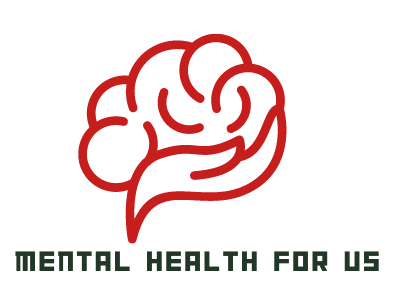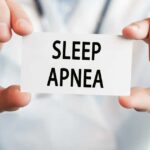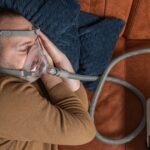ECT for Bipolar Disorder
Introduction
Electroconvulsive Therapy (ECT) has been used for decades to treat psychiatric disorders like Bipolar Disorder. Bipolar Disorder is a complex and debilitating condition that causes recurrent mood swings from severe depression to manic or hypomanic states. ECT, or “shock therapy,” induces brain seizures with electrical currents. ECT, despite its stigma, is a safe and effective treatment for severe, treatment-resistant bipolar symptoms. In this section ECT will be discussed in relation to Bipolar Disorder, including its indications, benefits, side effects, and role in the treatment spectrum.
What is Electroconvulsive Therapy (ECT)?
ECT, also known as Electroshock therapy, is an effective treatment for severe psychiatric disorders like bipolar disorder and major depression. ECT induces a controlled seizure by sending electrical pulses to the brain through scalp electrodes. This treatment is especially effective for treatment-resistant depression and severe symptoms like suicidal ideation. Multiple 5- to 10-minute ECT sessions are usually given. It may be combined with medication and therapy as an ongoing treatment. ECT is mostly used for mood disorders, but it can also treat acute mania, mixed mania, and obsessive-compulsive disorder. ECT may have risks and cognitive side effects, so only a trained healthcare professional should perform it..
Uses of ECT for Bipolar Disorder
Electroconvulsive therapy (ECT) is a common bipolar disorder treatment. Drug-resistant depression, mania, mixed states, and catatonia associated with bipolar disorder can benefit from it.
One of the main uses of ECT for bipolar disorder is drug-resistant depression. Bipolar disorder may not respond well to depression medications. Alternative treatments like ECT can relieve symptoms and stabilize mood.
Manic, mixed, and catatonic episodes can also be treated with ECT. These severe and often debilitating symptoms can affect a person’s health and daily life. ECT reduces the severity and duration of these episodes, giving patients much-needed relief.
ECT can stabilize mood swings and reduce severe bipolar episodes. If pharmacological treatments fail or symptoms are severe, it is an important treatment option. ECT, combined with other treatments, can greatly improve bipolar disorder patients’ quality of life.
Types of ECT
Bipolar disorder is usually treated with 3 main types of ECT including bilateral, unilateral, and maintenance ECT. Bilateral ECT delivers electrical pulses from electrodes on both sides of the head. This type of ECT has more cognitive side effects but may treat severe manic and depressive symptoms faster. Unilateral ECT uses electrodes on one side of the head. This type of ECT has fewer cognitive side effects but may take longer to treat severe symptoms. After ECT sessions, maintenance ECT is scheduled to prevent relapse and maintain symptom improvement. Specific factors, symptom severity, treatment goals, and patient preferences will determine ECT type. Patients with bipolar disorder should consult with their doctor to determine the best ECT for them.
Unilateral ECT
Unilateral ECT is an effective bipolar disorder treatment, especially for severe mania or depression. Electrical pulses are delivered to one side of the brain to target mood-regulating areas.
Unilateral ECT has fewer cognitive side effects than bilateral ECT, which stimulates both sides of the brain. Patients are safe and comfortable during the procedure under general anesthesia. Electrodes on the scalp deliver a high-frequency electrical pulse that causes a 30-second seizure.
For bipolar disorder depressive symptoms, unilateral ECT is particularly effective. It can treat severe depression that other treatments fail. Response is often faster than with pharmacological treatment.
While unilateral ECT is generally safe, it has risks. Immediately after treatment, memory loss and confusion occur. These cognitive effects usually improve with treatment and monitoring.
Finally, unilateral ECT for bipolar disorder reduces cognitive side effects and relieves symptoms faster. Working with a doctor to assess each patient’s unilateral ECT risks and benefits is essential. Unilateral ECT can help manage bipolar disorder and improve mental health if done properly.
Bilateral ECT
Bipolar disorder is treated with bilateral ECT. Bilateral ECT stimulates both sides of the brain, unlike unilateral ECT. General anesthesia ensures patient comfort and safety.
Electrodes on the scalp deliver electrical pulses to the brain during the procedure. To induce a therapeutic seizure, electrical pulse intensity and duration are carefully controlled. This seizure usually lasts 30 seconds.
The procedure is performed under anesthesia and muscle relaxants to reduce risks and discomfort. The patient is unconscious and unaware during treatment due to anesthesia. Muscle relaxants reduce seizure-related muscle contractions.
Bilateral ECT requires physiological monitoring. It lets doctors closely monitor the patient’s heart rate and blood pressure during the procedure. This monitoring ensures patient safety and allows prompt intervention for complications.
Some medications may need to be stopped during bilateral ECT due to interactions. Healthcare providers will advise on which medications to stop and which to keep.
In summary, bilateral ECT stimulates both sides of the brain to treat bipolar disorder. The procedure is done under general anesthesia with muscle relaxants and physiological monitoring. Therapeutic seizure induction is used to treat bipolar disorder.
Bi-Temporal ECT
Bi-Temporal electroconvulsive therapy (ECT) induces therapeutic seizures with electrical pulses to treat psychiatric disorders, particularly severe depression. It uses electrodes on both sides of the head, unlike unilateral or right unilateral ECT.
The procedure for Bi-Temporal ECT is similar to others. Electric pulses are sent to the brain via scalp electrodes. The pulse intensity and duration are carefully controlled to cause a 30-second seizure. To ensure patient comfort, anesthesia and muscle relaxants are given. The patient is unconscious during treatment.
For severe, treatment-resistant, or refractory depression, bi-temporal ECT is often used. Acute mania and catatonia are also candidates. Compared to other treatments, Bi-Temporal ECT can respond quickly.
Bi-Temporal ECT may have more cognitive side effects than other types. It may also work better when other ECT methods fail. Bi-Temporal ECT use depends on the patient’s medical condition and clinical practice guidelines.
In summary, Bi-Temporal ECT induced seizures with electrical pulses for severe depression. Electrode placement and cognitive side effects differ from other ECT types. Its use depends on the patient’s condition and clinical practice guidelines.
Ultrabrief Pulse Width ECT
Ultrabrief pulse width ECT may help manage manic and mixed episodes of bipolar disorder. Similar to other ECT methods, scalp electrodes deliver electrical pulses to the brain.
Ultrabrief pulse width ECT has high remission rates for severe mania and mixed mania. It has fewer cognitive side effects than traditional ECT due to lower electrical dosing.
Ultrabrief ECT can induce remission with different electrode placements. Bilateral ECT, which places electrodes on both sides of the head, may relieve severe symptoms. Unilateral ECT, with electrodes on one side, has also shown promising results with fewer cognitive side effects.
Finally, Ultrabrief pulse width ECT may help bipolar disorder patients with manic and mixed episodes. For effective relief, its high remission rates, reduced electrical dosing, and potential for fewer cognitive side effects make it worth considering. Individual and treatment factors will determine electrode placement.
Benefits of ECT for Bipolar Disorder Treatment
ECT has been linked to cognitive side effects, but ultrabrief pulse width ECT may reduce these risks. This article will discuss the benefits of ECT in treating bipolar disorder, including its ability to manage severe symptoms, ultrabrief ECT’s potential for lower cognitive side effects, and optimal electrode placements. Understanding ECT’s benefits helps people and doctors decide whether to use it to treat bipolar disorder.
Immediate Relief from Symptoms
Refractory bipolar depression patients experience immediate relief with ECT. This treatment can bring relief and save lives. ECT can relieve severe depression and manic episodes in bipolar disorder.
ECT provides faster relief than other treatments. Medication and therapy may take weeks or months to work, but ECT can provide immediate relief after a few sessions. Refractory bipolar depression patients who have not responded to other treatments need this.
ECT’s rapid relief of severe depression is notable. Severe depression can cause hopelessness, exhaustion, and suicide. ECT induces brief seizures with controlled electrical pulses to break this debilitating state. Seizures boost brain neurotransmitter levels, improving mood and mental health.
Additionally, ECT has been shown to treat bipolar disorder’s manic episodes. Manic symptoms like elevated mood, energy, and impulsivity can reduce daily functioning. Continuous treatment can reduce manic symptoms in ECT-induced mania.
Refractory bipolar depression patients experience immediate relief with ECT. ECT improves bipolar disorder patients’ quality of life by treating severe depression and manic episodes. Its speed of response makes it a good treatment option for those who have failed other treatments.
Reduced Risk of Suicide Attempts and Completion
Bipolar disorder patients benefit from ECT in reducing suicide attempts and completion. This treatment relieves depressive symptoms that can lead to suicidal ideation quickly and may save lives.
Bipolar disorder patients, especially during depressive episodes, worry about suicide. The rapid response of ECT makes it superior to other treatments. Medication and therapy may take weeks or months to work, but ECT can provide relief after a few sessions.
Numerous studies have shown that ECT prevents bipolar suicide. In bipolar disorder patients who had attempted suicide, Medda et al. found that ECT reduced suicide risk. ECT significantly reduced suicide completion in severe depression and bipolar disorder patients, according to another study.
By alleviating depressive symptoms, ECT can restore hope and mental health, reducing suicide attempts. In acute suicidal ideation crises, its rapid relief is crucial. ECT prevents suicide, making it a good treatment for bipolar disorder patients at risk of self-harm.
ECT is crucial in reducing bipolar disorder suicide attempts and completion. It can quickly relieve depressive symptoms, making it an effective treatment for acute suicidal ideation. ECT prevents suicide in bipolar patients and gives self-harming patients hope.
Fewer Hospitalizations and Emergency Room Visits
ECT for Bipolar Disorder may reduce hospitalizations and ER visits, making treatment more stable.
ECT can prevent hospitalizations and ER visits by managing symptoms. It relieves depression and mania symptoms quickly, reducing acute care. ECT can relieve symptoms after a few sessions, unlike other treatments that may take weeks or months.
Since ECT provides long-term relief, it may reduce the need for acute care. Studies have shown that ECT can help people maintain stability over time, reducing relapses and emergency interventions.
ECT helps patients manage their condition by preventing relapses and reducing episode severity, reducing hospitalizations and ER visits. This improves their quality of life and lowers emergency care costs.
In summary, ECT for Bipolar Disorder can reduce hospitalizations and ER visits by managing symptoms, providing long-term relief, and preventing relapses. Its quick response and stability make it a good treatment for people who want to avoid acute care.
Side Effects and Risks of ECT for Bipolar Disorder Treatment
ECT is an effective treatment for bipolar disorder, but it has side effects and risks. ECT, like any medical procedure, has risks, but they are low. Most common side effects include temporary memory loss and confusion after treatment, which usually resolve within a few days. Patients may experience longer-lasting cognitive side effects like memory or attention problems, but these usually improve over time. ECT can also cause manic symptoms in bipolar disorder patients, especially if they are not manic.
Cognitive Side Effects
ECT treats severe depression, bipolar disorder, and other psychiatric disorders well. However, cognitive side effects of this treatment must be understood and discussed.
ECT is often associated with short-term memory loss, which can cause confusion and difficulty recalling recent events. Most patients recover from these memory issues within two months without much stress.
Confusion, difficulty concentrating, and long-term memory loss may also result from ECT. However, these side effects are usually mild and temporary.
ECT is generally safe, but there are risks and side effects. These may cause muscle aches, jaw pain, headaches, and, rarely, manic episodes.
Patients considering ECT should discuss the risks and benefits with their doctor. ECT requires careful monitoring and evaluation of patients’ conditions and responses to treatment to maximize patient outcomes.
Cardiac Complications
ECT patients, especially those with cardiac conditions, may experience cardiac complications. It uses electrical pulses to induce a seizure in the brain, which can affect the cardiovascular system.
ECT may increase heart rate. The electrical stimulation used during treatment can temporarily raise heart rate. This increase is usually temporary and the heart rate returns to normal shortly after treatment, but healthcare providers should closely monitor patients with heart conditions or a higher risk for cardiovascular issues.
ECT can also alter blood pressure. These changes are usually mild and temporary, but people with hypertension or cardiovascular disease should be closely monitored during and after ECT sessions to keep their blood pressure safe.
However, cardiac arrhythmias during or after ECT are rare. Individuals with preexisting arrhythmias may be concerned about these irregular heart rhythms. Healthcare providers must carefully evaluate and monitor patients with known cardiac conditions before and after ECT to reduce arrhythmia risk and address any concerns.
Before starting ECT, patients should have a thorough cardiovascular evaluation, including an electrocardiogram (ECG) to assess heart electrical activity and identify risks. This evaluation helps healthcare providers decide if ECT is right for cardiac patients.
ECT is generally safe, but cardiac complications can occur, especially in patients with preexisting cardiac conditions. To reduce risks and ensure patient safety, ECT must be monitored before, during, and after.
conclusion
In conclusion, ECT is an effective treatment for bipolar disorder and severe depression, but cardiac complications should be considered and monitored.
The increase in heart rate during ECT is usually temporary, but doctors must closely monitor patients with heart conditions or a higher risk for cardiovascular issues. Usually mild and temporary, blood pressure changes may occur. Patients with hypertension or cardiovascular disease should be monitored to keep their blood pressure safe.
Healthcare providers must thoroughly assess and monitor patients with known cardiac conditions due to rare reports of cardiac arrhythmias during or after ECT. Before starting ECT, a cardiovascular evaluation, including an ECG, should identify any abnormalities or risks.
FAQs
Is ECT FDA approved for bipolar disorder?
Yes, the FDA approves ECT for bipolar disorder. When other treatments fail or symptoms are severe or treatment-resistant, it is considered.
Who is ECT not recommended for?
Medical conditions that make ECT risky may contraindicate it:
- ECT can stress the heart, so it may not be recommended for severe heart conditions.
- ECT may be risky for severe hypertension.
- ECT may not be recommended for people with recent strokes or brain tumors.
- ECT is usually avoided during pregnancy unless the benefits outweigh the risks.
Is Lithium good for bipolar?
Yes, Lithium is an effective and widely prescribed mood stabilizer for bipolar disorder.







